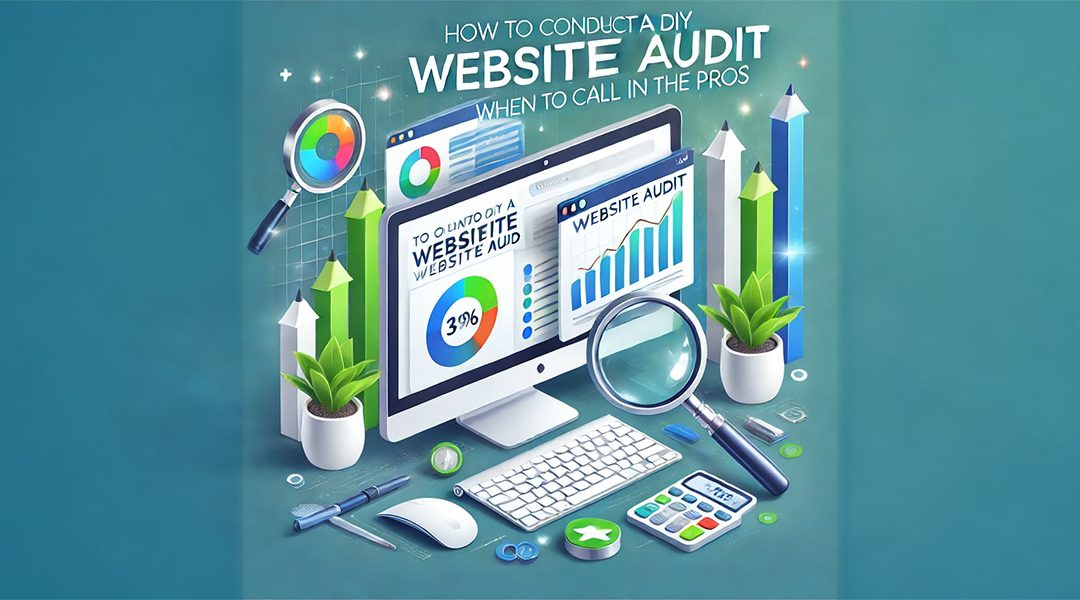Your website is often the first point of contact between your business and potential customers, so it’s essential that it functions optimally. A website audit helps you identify areas for improvement, ensuring that your site is performing at its best. In this post, we’ll walk you through a simple guide to performing a basic website audit, covering key areas like speed, SEO, and usability. For more complex issues, it’s always best to consult with professionals like those at “In a Day.”
1. Check Website Speed
Website speed is crucial for user experience and SEO. A slow-loading site can frustrate visitors and lead to higher bounce rates, which can negatively impact your search engine rankings.
How to Check:
- Use tools like Google PageSpeed Insights or GTmetrix to analyse your website’s load times.
- Aim for a load time of under 3 seconds.
Quick Fixes:
- Compress images to reduce file size.
- Minimise the use of heavy scripts or plugins.
- Use a Content Delivery Network (CDN) to improve load times.
2. Assess SEO Performance
Search Engine Optimisation (SEO) is essential for driving organic traffic to your website. A basic SEO audit will help you understand how well your site is optimised for search engines.
How to Check:

- Use Google Search Console to monitor your site’s performance and identify any issues.
- Perform keyword research to ensure you’re targeting relevant terms.
Quick Fixes:
- Optimise meta titles and descriptions with relevant keywords.
- Ensure all images have alt text.
- Create and submit an XML sitemap to Google.
3. Evaluate Usability and User Experience
A website that is easy to navigate and user-friendly keeps visitors engaged and encourages them to take action.
How to Check:
- Browse your website from the perspective of a first-time visitor.
- Test your site on different devices (desktop, tablet, mobile) to ensure it’s responsive.
Quick Fixes:
- Simplify your navigation menu for easy access to key pages.
- Ensure buttons and links are easy to click on all devices.
- Improve the readability of your content by using clear fonts and sufficient spacing.
4. Review Content Quality
High-quality content is vital for engaging your audience and improving your SEO.
How to Check:
- Review your content to ensure it is up-to-date, relevant, and valuable to your audience.
- Check for broken links and fix them immediately.
Quick Fixes:
- Update outdated content and remove any irrelevant information.
- Add new blog posts or resources that address current industry trends.
- Ensure all internal and external links are working properly.
5. Test Security Features
Website security is critical for protecting your business and your customers’ data.
How to Check:
- Ensure your website is using HTTPS, not HTTP.
- Regularly update your CMS, plugins, and themes to the latest versions.
Quick Fixes:
- Install an SSL certificate if you haven’t already.
- Use strong, unique passwords for all accounts associated with your website.
- Consider using a security plugin like Wordfence to monitor your site.
When to Call in the Pros
While a DIY website audit can help you identify basic issues, more complex problems may require professional expertise. If you’re unsure how to fix certain issues, or if your website needs a more thorough audit, it’s time to bring in the experts.
Success Story: “A Brisbane-based e-commerce store approached us after noticing a decline in sales. We conducted a comprehensive website audit and identified several key issues, including slow load times, poor mobile optimisation, and outdated SEO practices. After implementing our recommendations, the store saw a 45% increase in traffic and a significant boost in sales within three months.”
Get Started with a Free Consultation
If you’ve conducted a DIY website audit and need help addressing more complex issues, or if you’d like a professional to take a closer look, we’re here to help.
At “In a Day,” we specialise in providing comprehensive website audits and tailored solutions to improve your site’s performance. Contact us today for a free one-hour consultation. We’ll work with you to identify problem areas and create a plan to optimise your website for success. Don’t let technical issues hold your business back—take action now and ensure your website is working for you, not against you!



 Andy Henderson, the Director and Head Trainer at In a Day, manages the day to day operations of our Brisbane (Carina) Training facility. Andy has more than 20 years experience in Search Engine Optimisation, Web Design, and in excess of 10 years WordPress website development.
Andy Henderson, the Director and Head Trainer at In a Day, manages the day to day operations of our Brisbane (Carina) Training facility. Andy has more than 20 years experience in Search Engine Optimisation, Web Design, and in excess of 10 years WordPress website development.